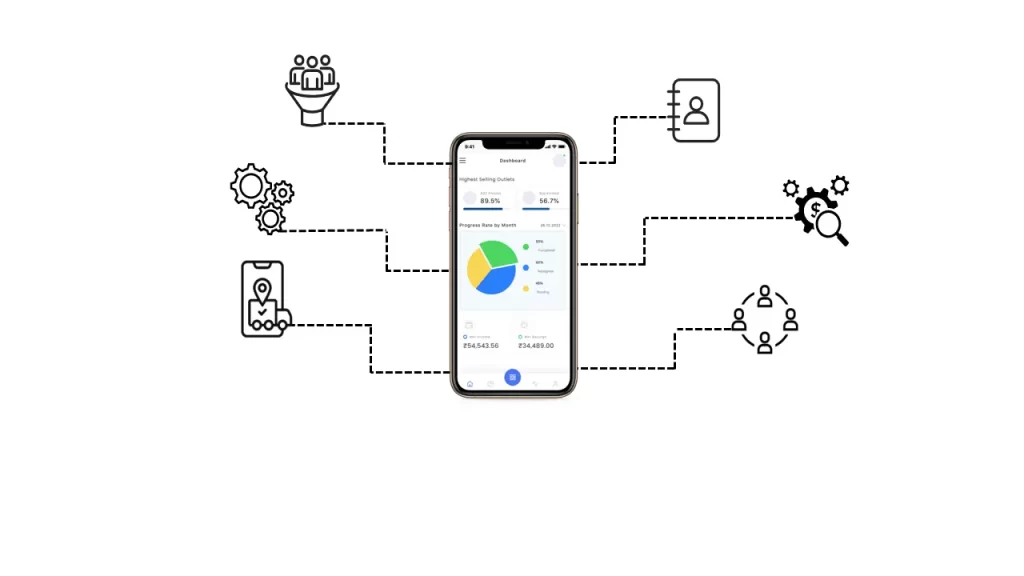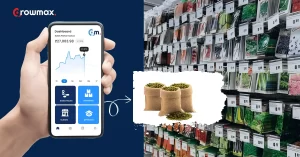Summary:
- The features of CRM and Sales Force Automation may overlap greatly, yet a CRM is not a substitute for the SFA. In fact, the other way around is true in most cases.
- Sales Force Automation brings three values: Visibility, Control, and Sales Performance.
- The traditional retail sales methods have many inefficiencies, and SFA fills in all the gaps.
- Growmax SFA acts as a data-driven compass in business decision-making.
Differences between a CRM and Sales Force Automation
While CRM is a popular and widely-known software, very few know what Sales Force automation is. And even rarer among them know the differences between the two.
This ignorance may not bother the other business growth, but markets like FMCG, CPG, and Pharma are severely impacted by it. Knowing about both and choosing the best ones can severely boost their growth and open new doors of data-enabled opportunities.
What is a CRM?
A CRM is a tool that streamlines the relationships between a company and its customers. It covers customer touchpoints, stores interaction data, and automates the messaging each customer must receive per his position in the funnel.
What is Sales Force Automation?
Sales Force Automation is a data-driven tool that enables companies to develop three core competencies to gain the upper hand over the competition.
- It enables real-time visibility, allowing companies to oversee their sales, teams, and forecasts.
- It gives them real-time control over their sales, people, and operations.
- It automates the mundane, repetitive tasks that field teams must complete daily and directs that time toward revenue-generating work.
Challenges with traditional sales management
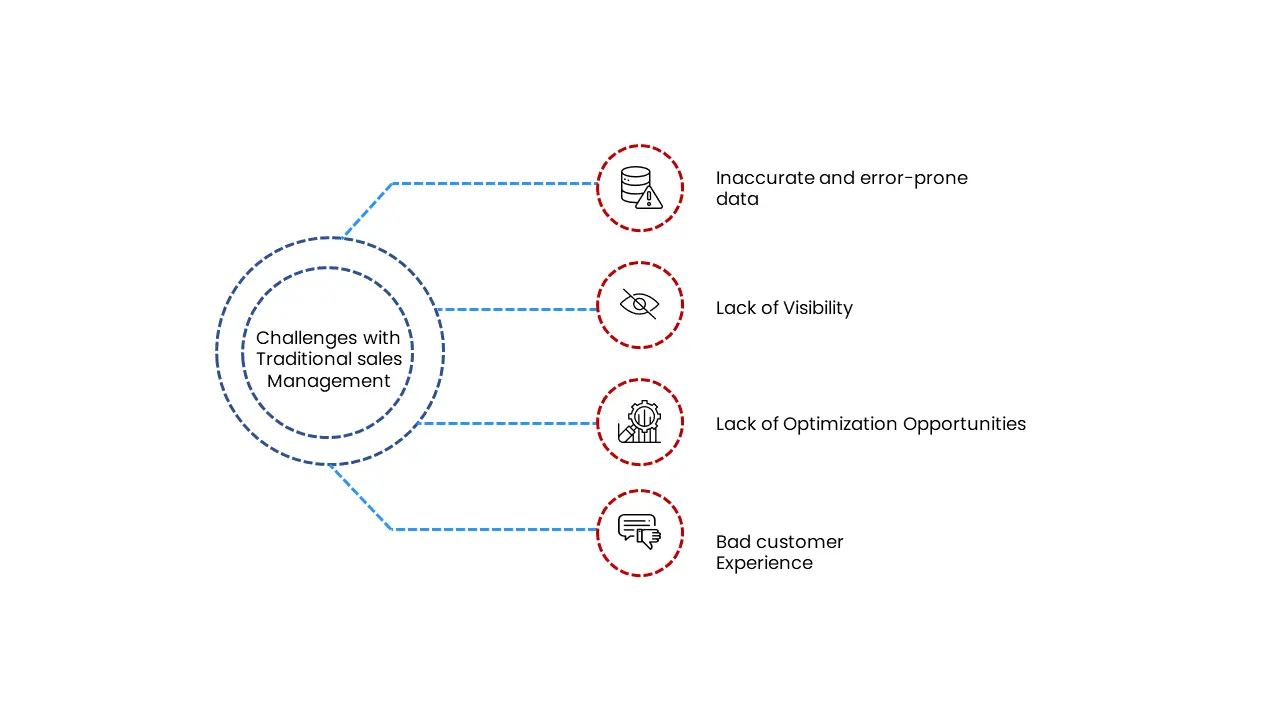
Why not do it the traditional way? What‘s wrong with the old methods? After all, papers and spreadsheets have always been enough for us.”
The majority of businesses in retail still use traditional ways. Their salesmen use paper notebooks to take retail orders. The managers use spreadsheets to organize data. And the CEOs make decisions based on months-old data.
However, these arrangements are not sustainable for the future. Technology is disrupting traditional retail, and businesses everywhere are adopting it for a competitive edge. Traditional methods are full of inefficiencies and loopholes. They cannot handle the ever-rising dynamism of the markets and compete for edge-on-edge at the same time.
Here are the core challenges in traditional sales that hold back a company:
Inaccurate and error-prone data
Field managers have always struggled with erred data. They are continuously bombarded with lumps of delayed field data in spreadsheets. These lumps of information are overwhelming, and keeping them error-free is almost impossible. Furthermore, it is painfully slow to communicate this data.
Lack of visibility
Retail supply chains are made up of interdependent blocks. The top-level block oversees the one beneath it. And the same thing continues throughout the hierarchy. However, none of the blocks have any visibility beyond their immediate block.
They receive delayed summaries and act on incomplete data. This lack of visibility and data inaccuracy leads to wrong decisions and turns that wreak havoc on the companies.
Lack of optimization opportunities
Traditional retail offers zero to no opportunities for optimization. It fails to track its processes and generate insights that can be used for optimizations. What does it mean? It means companies lose opportunities to boost their productivity and lower costs.
Bad customer experience
Traditional methods need to be revised to keep customer satisfaction. Because it is offline, slow, and complex, it fails to provide the right products at the right place at the right time.
The outlets have to wait many days to get their order fulfilled. And even at fulfillment, the order details are often altered, and he receives the wrong SKUs and quantities.
SFA as part of a larger technology stack
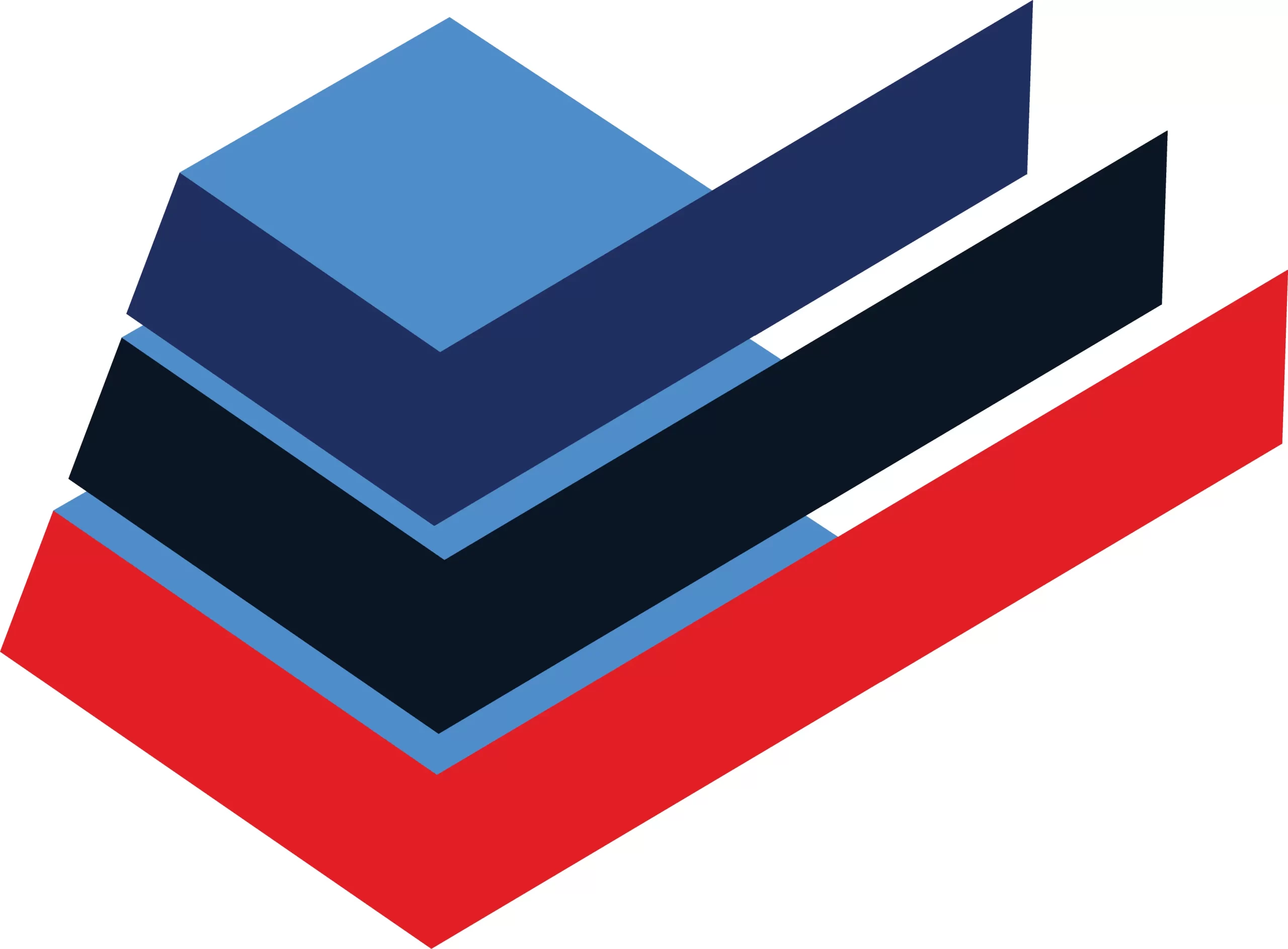
Sales Force Automation (SFA) is crucial to the retail technology stack. It helps streamline the operations at their core(field level). Furthermore, retail companies must improve their insight efficiency, gain operational visibility, and practice real-time control.
These solutions are designed to help companies enhance their team management and streamline processes such as lead and customer relationship management.
SFA can also be integrated with other technologies to create a comprehensive business stack that supports the business end-to-end. Such technologies include ERPs, CRMs, and Business Intelligence tools.
SFA as a tool for data-driven decision making
Sales force automation is a powerful tool for data-driven decision-making in retail. It enables a firm to get real-time insights regarding its sales performance, customer interactions, and crucial opportunities for good decision-making.
With SFA, CEOs can track operational excellence in their intuitive dashboards. They can see the trends, forecast sales, and filter the information to guide their direction.
By leveraging such data, decision-makers can make informed decisions.
Areas of Sales Force Automation

Sales Force Automation transforms several areas in retail. It automates data management, streamlines lead, boosts field productivity, and more. Here are some of the key areas that SFA automates in the retail sector:
Lead management
SFA provides a centralized platform to capture, store, manage, and track leads effectively. It enables the managers to prioritize the leads and allocate them effectively to the field teams.
Customer relationship management
Limited by their very nature, retail companies cannot offer much personalization to their customers (retail outlets). They need more time to track the demand and consumption patterns of each kirana store. They cannot track their sales patterns and keep adequate stocks available when the outlets need them.
Sales force automation solves this. It enables managers to track the patterns of each customer individually. It offers intricate insights and details that help them strengthen their relationships with outlets and create a win-win situation.
Order management
Sales force automation streamlines and automates the process of order-taking and order management. For example, with the GrowmaxBI app, a sales rep can take orders directly from his smartphone. Once the order data is fed into his smartphone, SFA takes care of the rest.
Sales performance management
When sales reps are in the market, managers need a way to know where they are and what they are doing. To solve this, SFA allows 360 sales performance visibility and enables real-time team communication for the managers.
Sales forecasting
The quality of a forecast depends directly on the quality of the data it is based on. Unfortunately, most forecasts in retail are wrong because the underlying data are always full of errors. To prevent this, SFA digitizes the entire system, eliminating every human error possible.
Key ROI of SFA
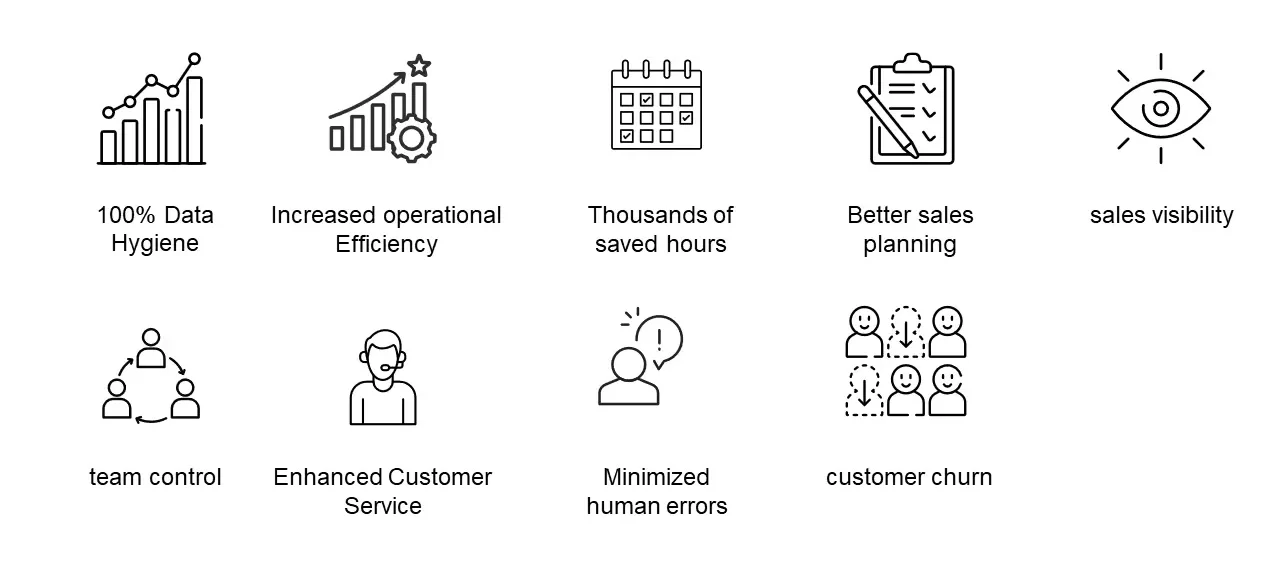
What are the key returns that SFA provides?
A business receives hundreds of direct benefits from an SFA system. However, here are some crucial ones that companies mention:
- 100% Data Hygiene
- Increased operational Efficiency
- Thousands of saved hours every month
- Better sales planning
- 360° sales visibility
- 360° team control
- Enhanced Customer Service
- Minimized human errors
- Minimized customer churn
What to look for in an SFA solution?

Installing a Sales Force Automation Solution into your business is a big decision. To ensure you don’t regret it in the future, here are the top 9 things you should look for in your solution.
Is it compatible with your business?
Analyze your business and how it works. Every software is made keeping a specific process model in mind.
Idea: Ask if the solution is “complete” by nature or made up of customizable modules that could be arranged to suit your business.
- Customization
Similar to the previous point, a good SFA provider will allow you to customize the solution based on your needs and requirements.
- Scalability
The solution must scale as you scale. Otherwise, it could create problems for your business in the future, and you’d have to switch the solution anyway.
- Integrations
The ideal software must integrate swiftly with your existing systems.
- User-friendliness
The interface and arrangement of the solution should be user-friendly. It will help the users derive the most ROI from the solution.
- Mobile accessibility
The solution must be accessible in windows, android, ios, and other platforms your targeted users will be using.
- Analytics and reporting
The SFA you choose should support advanced data-processing features such as predictive analytics.
- Security
SFA systems may reveal a lot of data about your company. Therefore, ensure your company’s data is stored securely and in a non-compromised environment.
To explore more about Sales Force Automation, check out our blogs. Learn how GrowmaxBI SFA can enhance your business with a personalized demo.
